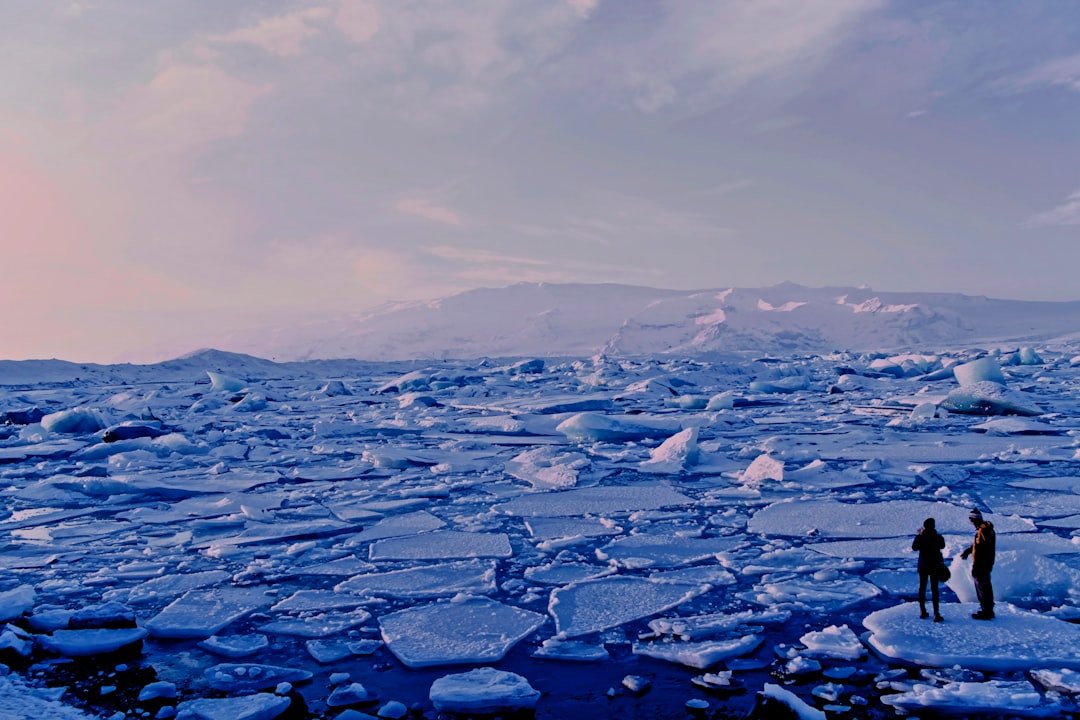The Need to Address Global Warming The term “global warming” refers to the gradual rise in Earth’s average surface temperature brought on by human activity, especially the release of greenhouse gases. It is one of the most urgent issues of the twenty-first century. The greenhouse effect is a phenomenon caused by these gases, which include carbon dioxide, methane, and nitrous oxide, trapping heat in the atmosphere. The Industrial Revolution, when fossil fuels started to be burned at previously unheard-of rates, is when this crisis first started. The concentration of these gases has since increased, causing the planet’s climate systems to undergo major changes.
Key Takeaways
- Global warming is causing rising temperatures and extreme weather events, leading to increased frequency and intensity of natural disasters.
- Melting polar ice caps and rising sea levels are threatening coastal communities and ecosystems, leading to loss of habitat and displacement of people.
- Disruption of ecosystems and loss of biodiversity are occurring due to changes in temperature and precipitation patterns, impacting plant and animal species.
- Global warming is affecting agriculture and food security through changes in growing seasons, water availability, and increased pest and disease pressure.
- Health impacts of global warming include heat-related illnesses, respiratory problems from air pollution, and the spread of infectious diseases.
Global warming has far-reaching effects that go well beyond simple temperature increases. Global economies, human health, and natural ecosystems are all at risk from it. The need for coordinated action is becoming more pressing as climate change awareness rises. Both scientists and environmentalists stress that quick action is needed to lessen its effects and adjust to the changes that are already occurring. Developing effective strategies to counteract the far-reaching effects of global warming requires an understanding of its complex nature.
The increase in average global temperatures is one of the most obvious effects of global warming. The Earth has warmed by about 1-2 degrees Celsius since the late 19th century, according to climate data. Weather patterns have been significantly impacted by this seemingly minor increase, resulting in more frequent and severe weather events. Droughts, heat waves, and torrential rains have become more frequent, upsetting ecosystems and communities alike.
Extreme weather events are not isolated occurrences; in many places, they are starting to happen more frequently. For example, hurricanes have become more powerful due to warmer ocean waters giving them more energy. Also, the number of wildfires has increased, especially in regions like California & Australia where protracted drought conditions make for ideal ignition conditions. The urgent need for comprehensive climate action is highlighted by the fact that these extreme events not only endanger lives but also put a strain on emergency services and infrastructure.
| Impact | Metrics |
|---|---|
| Rising temperatures | Global average temperature increase |
| Extreme weather events | Frequency of hurricanes, droughts, and floods |
| Sea level rise | Rate of sea level increase |
| Glacial melting | Extent of glacial retreat |
| Loss of biodiversity | Number of species at risk of extinction |
Because of the alarming rate at which the ice caps are melting, the polar regions are among those most impacted by global warming. Concerns regarding the effect of the Arctic’s dramatic decline in sea ice extent on global sea levels have arisen in recent decades. Rising sea levels are a major threat to coastal communities around the world as a result of the melting of glaciers & ice sheets. If current trends continue, projections suggest that sea levels could rise by up to three feet by the end of the century.
Sea level rise has catastrophic effects. Cities along the coast, like Miami, New Orleans, and Jakarta, are more vulnerable to flooding, which could force millions of people to relocate. Also, low-lying areas’ agricultural and drinking water supplies are at risk due to saltwater intrusion into freshwater supplies. Marine ecosystems are also impacted by the melting ice caps, which has an impact on species that depend on stable ice habitats for feeding and breeding. The urgency of taking global warming seriously is highlighted by the interdependence of these problems.
In addition to changing weather patterns, global warming is upsetting ecosystems everywhere. Many species find it difficult to adjust to their changing environments as temperatures rise. Others risk extinction if they are unable to locate suitable habitats, while others may migrate to cooler regions. It is concerning that biodiversity is disappearing because it reduces ecosystems’ resilience & their capacity to deliver vital services like pollination, clean air, and water filtration.
In delicate ecosystems such as coral reefs and rainforests, the effects on biodiversity are especially noticeable. Rising ocean temperatures and acidification have increased the frequency of coral bleaching events, which has resulted in sharp drops in coral populations. Likewise, the loss of habitat for innumerable species is made worse by deforestation brought on by climate change. Given that the loss of even one species can have a domino effect on food webs and ecosystem stability, conservation efforts are vital in the face of global warming. Because of its close ties to the climate, agriculture is especially susceptible to the consequences of global warming.
Growing seasons can be disturbed & crop yields decreased by variations in temperature & precipitation patterns. For example, droughts or flooding may reduce agricultural productivity in areas that formerly prospered on staple crops. This is a serious threat to food security, particularly in developing nations where agriculture is the main source of income for many communities. Also, growing temperatures may result in a rise in crop diseases and pest populations, endangering food production even more.
Lack of sufficient resources or support networks may make it difficult for farmers to adjust to these changes. Social tensions may increase and result in resource-related conflicts as food scarcity becomes more widespread as a result of climate-related issues. Resilience-building strategies & sustainable practices must be given top priority in creative solutions to these agricultural problems. Vulnerable Populations and Heat-Related Diseases. Particularly for susceptible groups, the dangers of heat-related illnesses are a serious worry.
These groups’ diminished capacity to control their body temperature makes them more vulnerable to heat exhaustion and heatstroke. Strategies that shield these populations from the damaging effects of extreme heat are crucial as global warming continues to worsen. Air quality and climate change?
Air quality problems can be made worse by shifting weather patterns, which can result in respiratory disorders and other health issues. Public health may suffer significantly as a result of rising air pollution, especially for those who already have respiratory disorders. Also, there is serious concern about the increase in vector-borne illnesses brought on by changing climates because warmer temperatures can increase the range of habitats for insects that spread disease, such as ticks and mosquitoes.
Mental Health and Natural Disasters. Climate change-driven natural disasters like hurricanes and floods can cause harm to impacted communities as well as mental health issues. These incidents can cause trauma & stress that can affect people & communities for a long time, which emphasizes the need for all-encompassing approaches that concurrently address public health and climate change. The interdependence of these problems emphasizes how critical it is to create preventative strategies that lessen the negative effects of global warming on human health. Global warming has wide-ranging and profound effects on the economy.
Extreme weather events cost governments & communities responsible for disaster response & recovery a lot of money as they occur more frequently. Flooding or hurricanes can cause billions of dollars’ worth of infrastructure damage, putting a burden on public coffers and taking funds away from other vital services. Also, because of shifting weather patterns, sectors like agriculture, tourism, and fishing that depend on a stable climate are facing more and more uncertainty. Coastal communities’ livelihoods are at risk due to declining fish stocks, & crop failures can result in higher food prices.
Climate change’s financial toll is already being felt in a number of industries today; it is not only a problem for the future. When developing climate policies that support sustainability & economic resilience, policymakers must take these economic realities into account. A dual strategy is needed to address global warming; in order to effectively counteract its effects, mitigation and adaptation measures must be used concurrently.
Mitigation entails cutting greenhouse gas emissions in a number of ways, including by encouraging sustainable land-use practices, improving building and transportation energy efficiency, and switching to renewable energy sources like solar and wind. However, the goal of adaptation strategies is to get ready for the already inevitable effects of climate change. This includes making investments in weather-resistant infrastructure that can survive severe weather, putting water management systems in place to deal with floods or droughts, and creating farming methods that improve food security in a changing climate. In order to develop effective strategies that are suited to particular regional challenges, community engagement is essential for both mitigation & adaptation efforts.
At the end of the day, one of the biggest problems facing humanity is global warming. It has an impact on all facets of life on Earth, including economies, public health, agriculture, and ecosystems. Nevertheless, despite the difficulties brought on by climate change, there is still hope for a sustainable future where both people and nature can flourish through coordinated efforts in mitigation and adaptation strategies. Action must be taken immediately, and tackling this pressing issue for future generations requires shared responsibility.



